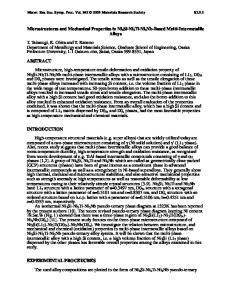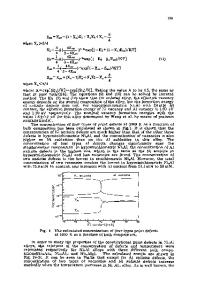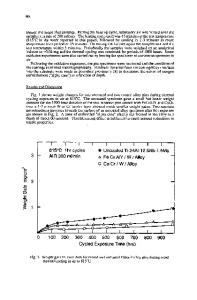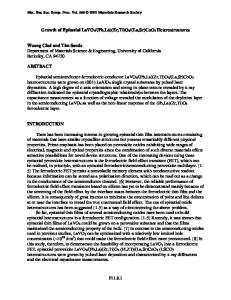Design and production of the Zr 3 Ti 2 Si 3 intermetallic compound
- PDF / 637,137 Bytes
- 7 Pages / 576 x 792 pts Page_size
- 44 Downloads / 366 Views
intermetallic compound
Pedro B. Celis, Eiji Kagawa, and Kozo Ishizaki Department of Materials Science and Engineering, School of Mechanical Engineering, Nagaoka University of Technology, Nagaoka, 940-21, Japan (Received 6 November 1990; accepted 28 May 1991)
The new ternary intermetallic compound Zr 3 Ti 2 Si 3 , with a (Mn5Si3)16H crystal structure, was designed based on the information of the crystal structure of the related binary compounds Zr 5 Si 3 and Ti 5 Si 3 in order to be used in ultra-high temperature structural applications. By x-ray diffraction analysis, we demonstrate the possibility of substituting an entire layer of zirconium atoms with a layer of titanium atoms in the (Zr5Si3)16H. An analysis of atomic neighbor distances in each compound was done. It was found that the Zr-Si relative interatomic distance diminishes while the Ti-Si distance increases. This indicates that Zr-Si bond strength is maintained as in the binary Zr 5 Si 3 . The resulting ternary intermetallic compound has a 16H crystal structure and has a lower density than the original compound of zirconium silicide. This new compound, which is stronger than Ti 5 Si 3 and lighter than Zr 5 Si 3 , is considered an excellent candidate of the next generation of intermetallic compounds for ultra-high temperature structural applications.
I. INTRODUCTION Intermetallic compounds such as Ni3Al are being widely studied for high temperature structural applications. However, little is known about the next generation of intermetallic compounds for ultra-high temperature structural applications. Compounds that have a high melting point and a low specific gravity are expected to have high stiffness and to be creep resistant.1'2 Among intermetallic compounds, silicides with the (Mn 5 Si 3 )16H crystal structure have these characteristics.1'3 Silicides are considered to be corrosion resistant because of the formation of a passive layer of SiO2 on the surface.4 They have also been studied as reinforcements in silicide-matrix composites.5 Silicides of the 16H crystal structure, having melting points well over 2000 K, are expected to form the bulk of the next generation of intermetallic compounds. We have previously reported about the possibility of using Zr 5 Si 3 , which has a 16H crystal structure, for high temperature structural applications.3 Crystallographic data from Pearson's Handbook6 were used to reproduce schematically this 16H crystal structure, as shown in Fig. 1. This zirconium silicide has a very high melting point (around 2600 K), but its brittleness is comparable to that of ceramics.3 A titanium atom is lighter and smaller than a zirconium atom. Titanium belongs to the same group in the periodic table as zirconium, and has a similar electronegativity. Titanium also forms a silicide (Ti5Si3) with a 16H crystal structure. Based on the information provided by these two binary compounds, a ternary intermetallic compound was engineered by substituting a layer of Zr atoms with a layer of Ti atoms in the Zr5Si3 compound. The new compound has a l
Data Loading...











